As the first generation to grow up with social media since childhood, Gen Z is rewriting the rules of engagement and connectivity on social media, shaping our digital world in ways that challenge convention and elevate authenticity. Plenty has already been said about how these young consumers have different values when it comes to online content than previous generations; how they’re looking for more personalized engagement and brand connections; and how they’re drawn to content creators, influencers, and artists as trusted authorities.
However, Gen Zers are doing much more than consuming content: they’re co-creating trends, shaping language, and defining what it means for brands to show up in authentic and relevant ways. We’re exploring the evolving behavior of Gen Z, how key Zoomer-centric platforms like TikTok are changing, and the trends that brands need to harness to connect with this generation.
Why Gen Z matters to modern marketers
A Bank of America Research report found that Gen Z is likely to become the world’s largest and richest generation by around 2035, possibly amassing as much as $74 trillion in wealth globally by 2040. The same report also found that Gen Z tends to spend more freely than other generations (just one of the ways that the Gen Z vs. millennial divide continues to manifest). That’s a powerful incentive for marketers to learn how to engage them—and if that wasn’t enough, Zoomers are now primary drivers of social media trends.
Both as consumers and as producers, Gen Z is all-in on hot formats like short-form video, interactive content, live streaming, and meme-based storytelling. So, from YouTube to Meta to TikTok, if you can update your strategy to resonate with Gen Z, you can capture the loyalty of the next generation of consumers.
What are the biggest Gen Z social media platforms?
TikTok is Gen Z’s social media app of choice—by a lot. The app dominates time spent with social media among younger users, especially with those under 25, according to eMarketer.
TikTok has also expanded its footprint by becoming not just an entertainment platform, but a utility platform similar to a search engine. Gen Z often turns to TikTok as a first stop for tutorials, product reviews, and other informational queries. This ever-expanding usage pattern means it’s still true—to a degree—that if you’re targeting your social media marketing to Gen Z, there’s TikTok and then there’s everything else.
But the average time Gen Z spends on other apps is still significant: more than half of Gen Z is on Facebook, and the generation makes up the majority of users on Snapchat and X (formerly Twitter), according to eMarketer. Instagram, in particular, has kept evolving with these young consumers, with a shift toward centering its Reels short-form video platform and its shopping features. That’s why it’s important to understand the strengths of each platform and use it to communicate your message in the ways that will connect with Gen Z most effectively.
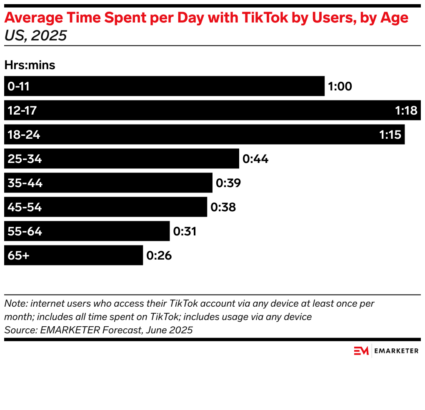
Source: eMarketer
TikTok: The heart of Gen Z engagement
We all know TikTok is the quintessential Gen Z app. Brands that aren’t leveraging it to reach Gen Z consumers are missing out on a lot of eyeballs. But there are still important considerations brands should keep in mind to capture Gen Z’s attention on the app.
Creating community through trends
With millions of users engaging on the platform daily, creating content that fosters a sense of community is essential–something successful content creators have already caught onto by sharing entertaining videos that resonate with their target audience.
Trends, challenges, and memes are a huge part of the fun of TikTok, which means they’re also key points where brands can find a way into the short-form video ecosystem. For brands that leverage these trends in the right way, they can become a part of the conversation and relate to Gen Z on a more personal level.
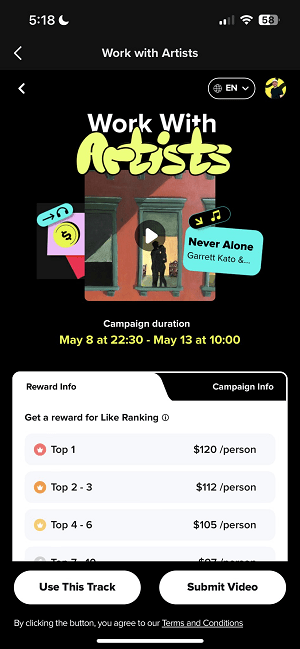
Source: SocialMediaToday
Partnering with creators
Partnering with influencers and content creators can extend brand reach and authenticity through organic collaborations that drive increases in trust and resonance. Brands looking to foster these connections can use the TikTok Creator Marketplace to discover influencers who align with their brand.
Staying relevant through music
Music is an especially important avenue on TikTok because of the app’s focus on song clips. By pairing content with the right tracks and partnering with popular artists, brands can create content that feels relevant and relatable to their target audience, ultimately driving engagement and brand affinity on TikTok.
TikTok has an offering designed to help brands leverage music in their TikTok strategy: the Pulse Premiere feature. The platform also has an in-app Music Hub designed to highlight trending artists, which brands can capitalize on by incorporating popular music and trending sounds into their content.
Driving purchases with TikTok Shop
TikTok has also become a hub for commerce. With TikTok Shop, brands can activate end-to-end shopping experiences within the app, including product discovery, influencer marketing, live shopping, and even in-app checkout. Paid media amplification can further promote products and incentivize users to check out within the app, streamlining the buying process and driving revenue on the platform. Live Shopping experiences give brands a chance to showcase their products in real time, encouraging immediate purchases and fostering a sense of excitement and exclusivity among Gen Z consumers.
YouTube: Long-form value and creator culture
YouTube is a big opportunity for marketers looking to get Gen Z’s attention. The video-sharing site is Gen Z’s top platform for keeping up with their favorite creators, watching music videos, and learning new things.
Gen Z and fandom culture
Gen Z is heavily invested in fandom and connection with public figures they love. A YouTube study found that 47% of Gen Z, referring to online individuals aged 18 to 24, have watched fan-made videos dedicated to specific content, celebrities, or artists, according to Google/Ipsos.
Brands can find new ways to drive strong loyalty and reach Gen Z consumers by leveraging YouTube BrandConnect, a platform that facilitates creator discovery and outreach for brands. BrandConnect is a self-service platform facilitating paid branded content campaigns by connecting creators with brands through an influencer dashboard.
Source: YouTube
By extending their reach through paid media and driving revenue, brands can tap into the immense influence of popular creators. Find the influencers who connect with your audience, then work with them to craft content that stays true to both of your brands.
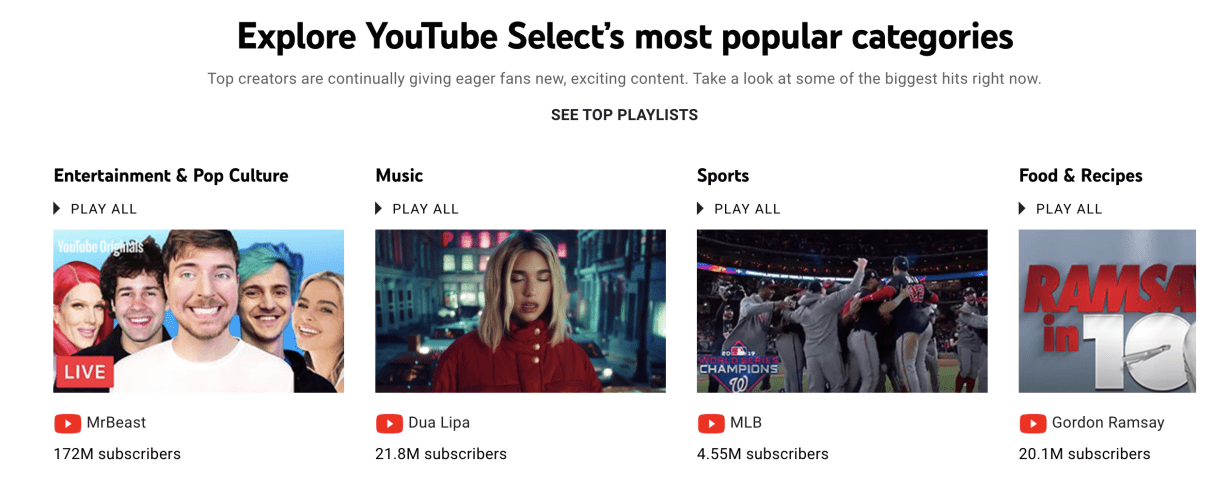 Source: YouTube
Source: YouTube
YouTube as an entertainment destination
YouTube’s focus on sports, music, livestreamed content, and streaming TV gives marketers exciting opportunities to connect with young audiences.
- Sports: YouTube is a major destination for Gen Z sports fans, and initiatives like NFL Sunday Ticket provide extended experiences with live chat and multi-view options. Brands can collaborate with creators to offer exclusive access and augmented content to enhance the overall experience for viewers.
- Music: YouTube’s extension of Coachella into the digital environment and the popular format of extended playlist videos (in the mold of the classic “Lo-Fi Beats to Study To” video) present creative avenues for brands to tap into the music-loving Gen Z audience through advertising and creator partnerships.
- Livestreamed Content: Another option for brands on YouTube is live streams, which offer the potential for real-time engagement with tactics like linking products to purchases, using QR codes, and integrating ecommerce elements directly into streams. This interactivity fosters a seamless shopping experience, making it easier for Gen Z consumers to make purchases while engaging with their favorite content.
- Connected TV: YouTube also has an important presence on connected TV, which is critical for reaching cord-cutting Gen Z consumers. As the most-watched TV streaming service in America, YouTube’s YT Select lands 70% of impressions on the big screen. Brands can leverage this reach to outperform traditional TV and online video platforms, effectively engaging Gen Z audiences on the screens they’re really looking at.
Tapping into YouTube Shorts
Beyond the power of creators, YouTube has also introduced new offerings for brands on the platform in recent years. YouTube is embracing creative and vertical video formats, especially with YouTube Shorts. Shorts is a social-first push, helping YouTube break down channel siloes and seek more eyeballs, time spent, and engagement.
With Shorts now garnering 50 billion daily views, the platform gives brands the opportunity to tap into a large audience through “snackable” content. Like on TikTok, brands can create and share innovative short-form content on Shorts to capture the attention of Gen Z viewers and stay relevant in the dynamic online video landscape.
If all these opportunities sound overwhelming, you’re in luck: there are tools to help your brand leverage them more easily. AI has lowered the barrier to entry for creators on YouTube. Brands can tap into YouTube’s multi-language audio tool or Google’s AI voiceover technology to scale content, find new audiences, and reimagine their own creative.
Instagram and Meta: Where aesthetic meets commerce
Meta might seem old school for TikTok-obsessed Gen Z audiences, but there are still ways to reach younger consumers on platforms like Facebook and Instagram. To make Meta work for Gen Z, brands should tap into the same aspects that resonate with the generation on other platforms: authentic connection, creator relationships, and vertical video engagement.
Creator culture still rules
Although Gen Z is more likely to go to TikTok or YouTube for a lot of their content, they still turn to Meta for some interactions, including product discovery, niche interests, and staying in touch with family and friends. Brands can leverage Meta’s platform to create engaging content that encourages conversations, supports social causes, and facilitates genuine connections. By understanding and participating in their social circles, brands can earn Gen Z’s trust and loyalty.
One essential way to do this is by embracing creator culture. To stay ahead in an evolving landscape, brands need to leverage the power of creator partnerships and support. Brands can use Meta’s Instagram Creator Marketplace to discover and collaborate with influencers who align authentically with their values and target audience. You can also invest in core apps and services for creators to boost creativity and enhance reach and revenue potential.
Shopping and Reels integration
One of the biggest recent evolutions of a Meta platform has been Instagram’s integration of its in-app shopping interface into Reels. If your brand has a shop set up on Instagram, you can now add clickable product link tags to reels that you post. 37% of Instagram’s total content reach happens through Reels, far outpacing Stories and grid posts. If you’re not posting Reels with links, now might be the time to start.
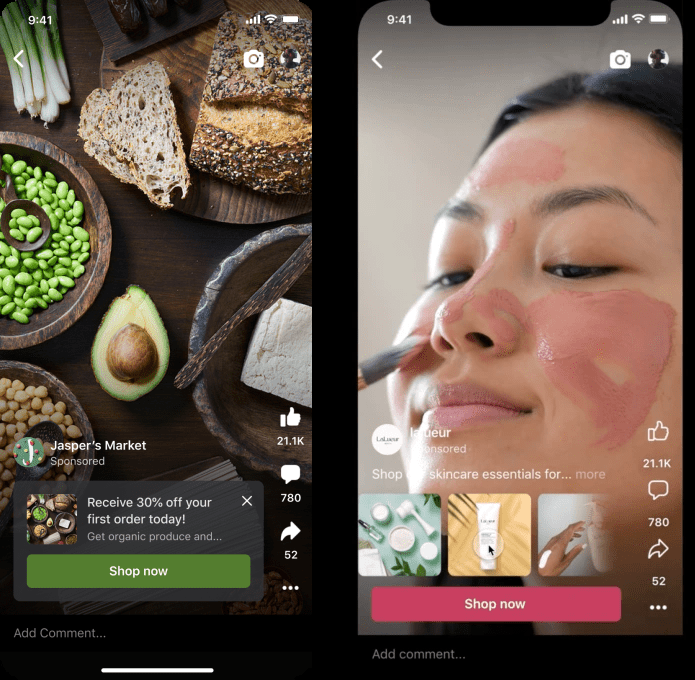
Source: SocialMediaToday
Leveraging AR and AI for immersion
Brands can also try out the creative and immersive experiences Meta has introduced on Facebook and Instagram to appeal to Gen Z consumers. Leveraging AI/AR technologies on Meta’s platforms can enhance content delivery by making it more interactive and appealing. Instagram’s AI chatbot in DMs can also streamline customer service and provide personalized experiences.
Integrating AR into Reels Ads and Facebook Stories can capture Gen Z users by offering them unique and entertaining ways to engage with brands and products. Meta’s AI-driven improvements in content discovery and recommendations have already led to a substantial increase in user engagement and content consumption, with more than 200 billion Reels played per day. Brands looking to reach younger audiences on the platform should tap into some of that AI power to help them win.
Snapchat: Private connection and creator innovation
Snap is a go-to messaging app for Gen Z, and the platform’s focus on helping users document their lives and stay close to friends makes it a great app for marketers to tap into.
Building intimate communities
Snapchat offers powerful creator collaboration tools that can help brands reach Gen Z consumers. With the Snap Star Collab Studio, brands can manage creator discovery and outreach on the platform to extend their reach with paid media.
Snap is an especially great place for brands because the platform has invested in new creative tools and expanded revenue-sharing programs for creators that have driven growth within the creator ecosystem, ensuring a continuous stream of engaging content for their target audiences. The number of creators posting on Snapchat was up 40% year-over-year in Snap’s Q4 2024 report, which makes it more likely than ever that brands can find authentic and relevant partners to work with.
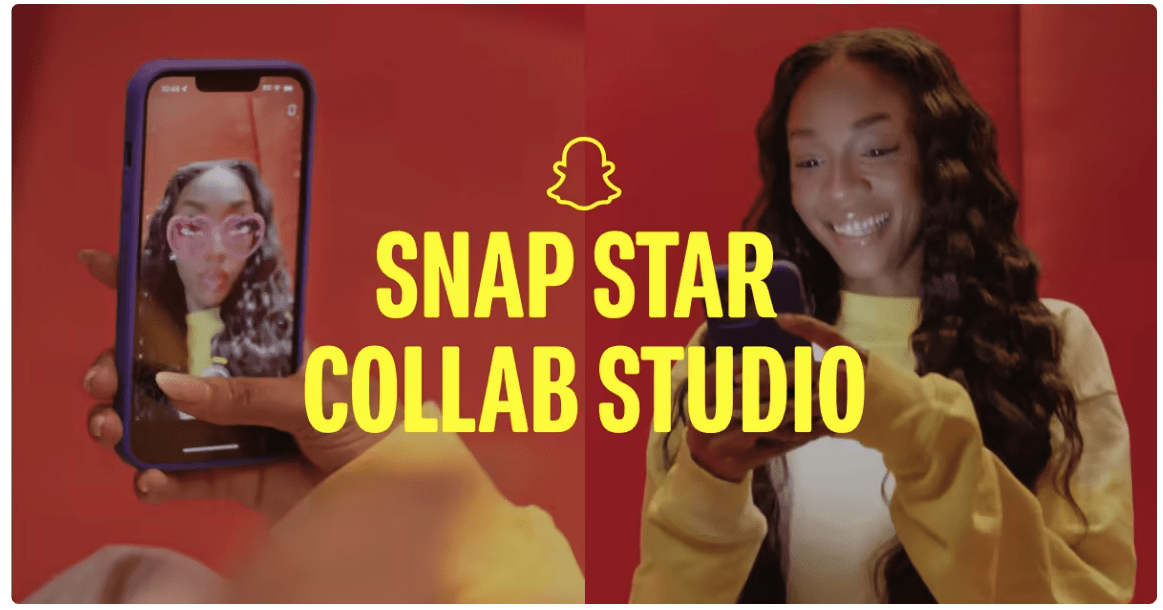
Source: Snap
Using Spotlight and AR for reach
Snap has also developed innovative tech to make its user experience more engaging and create better opportunities for advertisers. The app has stayed on the leading edge of AI/AR experiences, launching MyAI Chatbot and experimenting with conversational AI to provide more interactive and engaging experiences for users.
Incorporating AR experiences like Lens and Virtual Try-On also enables users to showcase products in a fun and interactive way. To everyday users, these AR tools are just fun (who could forget the viral crying lens?), but for brands, they drive consumer interest and boost conversion rates.
Spotlight Ads also continue to be a high-performing element of the platform, showcasing content with impressive growth and reach. Total Spotlight posts grew by 125% YoY in Q1 2025, indicating a healthy ecosystem that’s still drawing new creators to speak to the platform’s 460 million Daily Active Users (DAUs).
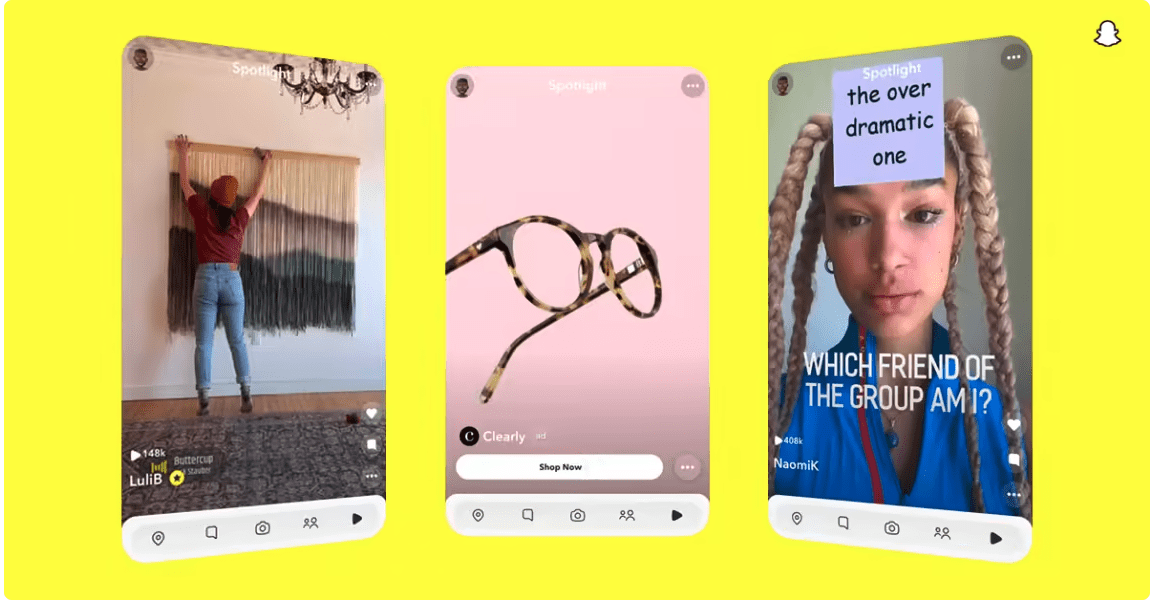
Source: Snap
Brands can take advantage of Snap’s capabilities by trying out these new AR tools and leveraging embedded ad experiences and Snapchat Lifestyle Categories optimization to keep ad placements relevant and tailored to each user’s preferences.
X (formerly Twitter): Real-time relevance
Reaching Gen Z consumers on X requires a multi-faceted approach that taps into their preferences for engaging content, authentic connections, and up-to-date information. Brands should focus on fostering meaningful interactions and conversations with their target audience.
Lean into live moments
On X, it’s all about participating in trending conversations and showing personality. Responding to comments, engaging in discussions, and using personalized messaging are effective ways to build rapport and trust with this demographic.
Because of X’s focus on breaking news and the rapid pace of conversation on the platform, it’s also crucial to stay up-to-date with the latest news and engage in public discourse when targeting Gen Z consumers on X. This generation values being informed and active in social and political discussions.
That said, brands should exercise care when jumping into discussions about social issues and make sure that any stances they take are aligned with their audience and values. While Gen Z consumers appreciate brands that are willing to state their values publicly, it’s equally important for businesses to think carefully before they wade into the kind of hot-button debates that are everywhere on X.
Testing new creator and ad tools
Brands can use X’s Amplify Audiences marketplace to maximize their reach by placing sponsored content within relevant sports and music conversations, which are important topics for the platform’s Gen Z users.
X also has a creator program, which can be an effective way to leverage the influence of content creators among Gen Zers on the platform. Brands can collaborate with popular creators and even begin revenue sharing for ads shown in post replies. This strategy encourages creators to organically integrate branded content into their discussions, making it more appealing and genuine to their followers.
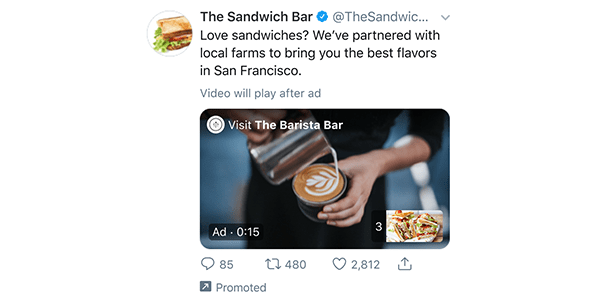
Source: X
Whatever strategy you take on the platform, you need to keep in mind that X has been changing rapidly since Elon Musk’s ownership. But despite major overhauls to the platform, it still has value for advertisers. X remains a destination for pop culture and current events and has sports licenses with the NBA and World Cup.
Key Trends in Gen Z Social Media Marketing for 2025 and Beyond
As technology for all social media platforms continues to evolve and Gen Z’s social media preferences change, staying agile and adaptable will be essential for brands to maintain their relevance and appeal. These trends are likely to have an impact on the social media marketing landscape in 2025 and 2026:
Nostalgia as strategy
Gen Z’s fondness for 90s and Y2K nostalgia is well-documented, and brands have turned this into a powerful opportunity to connect emotionally with Gen Z audiences. Campaigns like the revival of the Pop-Tarts “Crazy Good” mascots and, of course, the marketing frenzy surrounding the Barbie movie in 2023, hit the bullseye by playing into this thirst for nostalgia content.
Brands with a long history, like Barbie and Pop-Tarts, have a natural leg up in nostalgia marketing, but newer brands can get in on the fun by thinking creatively. Crocs, which arrived culturally long after the Y2K era, made a splash with nostalgia-loving consumers through their Juicy Couture collaboration.
Utility over novelty
The TikTok-as-search-engine trend plays into a broader Gen Z storyline: this generation gravitates toward practical content. Novelty is great, but in many cases, Gen Z consumers are looking for content that’s useful, not just entertaining.
Brands can seize this trend by making sure their content provides practical value to consumers. Tutorials, explainer videos, and product demos are some examples of content that build brand loyalty by helping consumers make a buying decision, complete a project, or otherwise improve their lives.
AI-powered creativity and access
AI can also help make performance creative more agile in marketing to the Gen Z audience by lowering production barriers and enabling fast scaling. Most platforms now include built-in AI tools like auto-translation and voiceovers that can help your brand personalize creative across audiences and markets. While these tools should always be used with a human in the loop to verify that all content meets your brand’s standards, they can give you a critical edge in the fast-moving social content ecosystem.
Whether you’re an established brand or a newcomer, the key to marketing to Gen Z on social media lies in capturing their attention authentically and staying alert for new trends as cultural and technological winds shift. The brands that partner with creators, embrace platform-specific tools, and stay aligned with cultural trends will ultimately be the ones that capture the hearts and minds of Gen Z consumers.







Responses